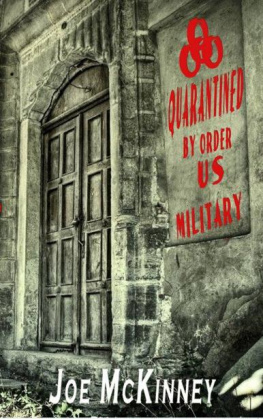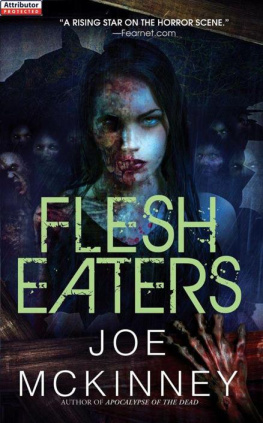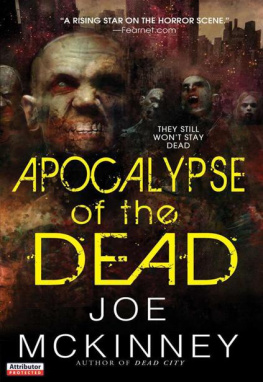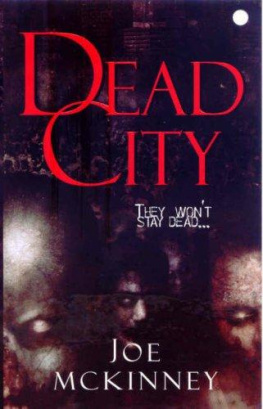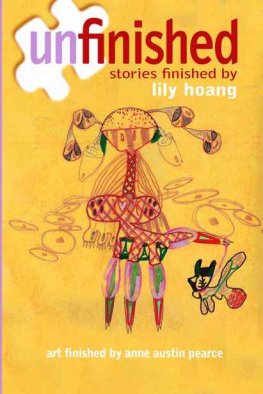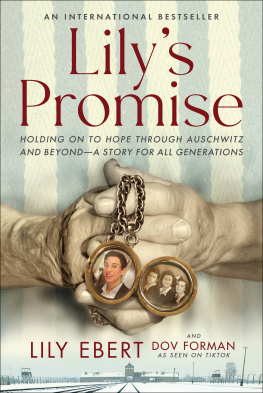Published Internationally by Lachesis Publishing
Kingston, Nova Scotia, B0P 1R0
Copyright 2009 Joe McKinney
Exclusive cover 2009 Carole Spencer
Inside artwork 2009 Carole Spencer
All rights reserved. The use of any part of this publication reproduced, transmitted in any form or by any means, electronic, mechanical, photocopying, recording, or otherwise, without the prior written consent of the publisher, Lachesis Publishing, is an infringement of the copyright law.
A catalogue record for the print format of this title is available from the
National Library of Canada
ISBN 1-897370-65-2
A catalogue record for the Ebook format of this title is available from the
National Library of Canada
multiple Ebook formats are available from
www.lachesispublishing.com
ISBN 1-897370-66-0
Credit: Darlene Oakley, editor
This is a work of fiction. Names, characters, places and incidents are either the product of the author's imagination or are used fictitiously, and any resemblance to any person or persons, living or dead, events or locales is entirely coincidental.
Chapter 1
I remember how hot it was that day. It was like trying to breathe with your head inside an oven. San Antonio in August is stifling. The heat grinds down everything it touches.
My skin was pruned from the sweat, and my eyes burned because I couldn't touch my face to wipe the sweat away. The air stank of rotten flesh, even after passing through the new set of filters in the gas mask of my biohazard suit. Between the heat and the stink, I was feeling lightheaded and a little sick.
But beyond the heat and the smell I have a crystal clear picture in my mind of the events of that day. I remember Isaac Hernandez driving his death wagon into our stall at the Scar. I remember walking around the flatbed trailer, looking at the shoeless feet of the dead, clipboard in my hand, while Chunk, my partner, went over the manifest with Hernandez.
That was when I saw the caked on dirt on the bottom of the dead girl's feet. She was one of the bodies up near the front of the trailer, her feet just barely poking out from beneath the tarpaulin. Nothing unusual about dirty feet, except that the gray toe tag she was wearing meant the Medical Examiner's Office had done an autopsy on her, and they rinse the bodies down after they do an autopsy.
Strange.
I pulled back the tarp, and then the white sheet from the dead girl's body. No hastily stitched Y across her chest and belly, no trace of an autopsy.
Very strange.
I looked a little closer, scanned her face. There was no sign of heliotrope cyanosis, the blueberry stain around the mouth that is the tell tale indication of death from the flu.
I looked at the rest of her. There was a bullet hole on the left side of her chest, near her armpit, hidden by the well-toned muscle of her arm.
Definitely not right.
Let me see your paperwork, I said to Hernandez, interrupting his conversation with Chunk.
Chunk gave me a look. What's wrong, Lily?
Grab that paperwork and step on out, I said. There's one up here I gotta take a look at.
Chunk gave me another look. You're kidding? We've got trucks waiting.
The sun was reflecting off the face plate of my mop suit, so Chunk couldn't see my face, but we'd been partners for a long time, and he recognized the tone of my voice and my stance.
You heard the lady, he said to Hernandez. Come on out.
The girl was a Jane Doe.
Nothing unusual in that. By that August, H2N2, the San Antonio Flu, was killing about twenty-five thousand people a month, and a lot of bodies showed up at the Scar without a name. The trouble was, most of the Does we got were homeless, or poor, so poor that they hadn't been far from homeless when they died, and the girl we had didn't look like she was either of those.
She was young, white, attractive. She looked to be maybe thirty-two or thirty-three. Dynamite figure. Height about 5ft 6 in, weight 115 lbs. Hair was milk chocolate brown, cute cut. Nice manicure. Bikini wax.
Definitely not homeless.
Somebody's probably missing that, Chunk said.
Yeah, I said. I was thinking the same thing.
We started with Isaac Hernandez, the death wagon driver. He was 58. He had a dark complexion and pocked cheeks, a big gut, and powerful arms. He told us he'd lost his wife, all four of his kids, and two of his granddaughters to the flu. They're buried out there somewhere, he said, and pointed at the mass graveyard we'd come to call the Scar.
I'm sorry to hear that, I said. But this girl didn't die of the flu.
Uh huh, he said, and stood there, like he was waiting for me to come to the point.
She was murdered, I said.
He looked at Chunk, then at me. I don't know, he said.
You don't know what?
I don't ... I don't know what you mean.
You're kidding me? The girl's on the back of your truck. She's got a bullet in her. You don't know why this is your problem? Is that what you're trying to tell me?
He blinked at me.
Well? I said.
I didn't kill her, he said.
I asked him to retrace his route that morning.
All these bodies came from the Arsenal, he said, meaning the Bexar County Medical Examiner's temporary morgue facility on Arsenal Street in the city's Tenth District. The shallow west side.
The Arsenal's mostly poor, mostly Hispanic, Chunk said. This girl ain't either one of those.
Hernandez shrugged inside the one-size-fits-all plastic biohazard suit the Metropolitan Health District provided for their death wagon drivers. It fit tightly around his meaty shoulders and round, protruding belly.
I don't know nothing about that. I was in the truck the whole time they were loading it.
You didn't see anybody suspicious near your truck? I asked. Somebody that looked like they didn't belong?
Lady, when I'm waiting at the morgue, I ain't watching who goes near the truck. That ain't my job. They got cops out there.
That much sounded believable enough. Most of the morgue facilities inside the wall are run pretty much like a zoo where the animals are told they're on the honor system when it comes to staying in their cages.
Well, what are you doing if you're not watching the truck?
Sleeping.
You were sleeping?
That's right. Look lady, they got me working sixteen hour days. Sometimes more than that. I'm dead on my feet most times. I sleep in the truck whenever I can.
Anybody approach you today? Chunk asked, meaning did anybody offer him a bribe to put something on the truck. It's pretty much common knowledge that the death wagon drivers can be bought. It's pretty much common knowledge most people can be bought, actually, inside the wall or out. But here, inside the wall, the black market is everywhere. It's a way of life.

